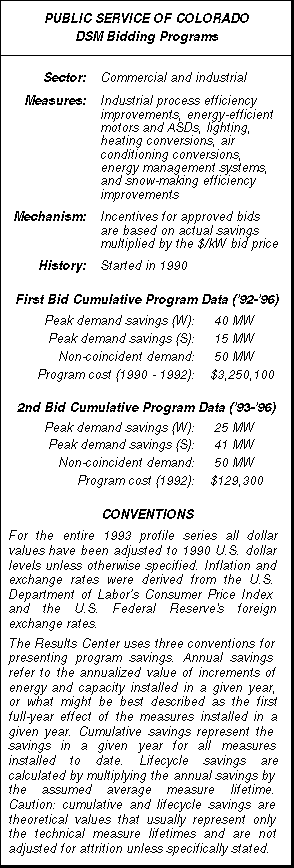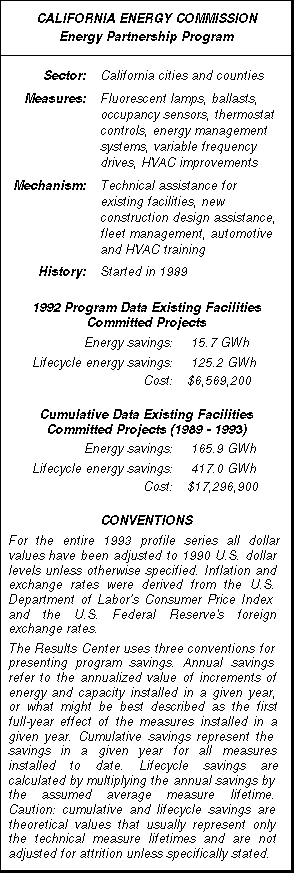EXECUTIVE SUMMARY
 Thanks is large part to the vision and charisma of program manager Ceedy Mewszel and her colleagues, Otter Tail Power Company has designed and implemented two rather exceptional programs to assist low income customers in Minnesota, North Dakota, and South Dakota. Their humor is apparent even in the programs’ names, House Therapy and Appliance Aid, the latter of which comes complete with a "ten-step process" in fond recognition of the program’s acronym, "AA".
Thanks is large part to the vision and charisma of program manager Ceedy Mewszel and her colleagues, Otter Tail Power Company has designed and implemented two rather exceptional programs to assist low income customers in Minnesota, North Dakota, and South Dakota. Their humor is apparent even in the programs’ names, House Therapy and Appliance Aid, the latter of which comes complete with a "ten-step process" in fond recognition of the program’s acronym, "AA".
While House Therapy began in 1988 as part of a mandated initiative it has evolved over time and is primarily designed to alleviate the financial pressures on low-income customers with all-electric heat, an expensive proposition in the cold winters of Minnesota. Over its five-year history the program has served 820 homes with deep levels of savings. The average savings per home is ~1,332 kWh per year at an installed average cost of ~$1,600.
A House Therapy treatment may include any number of cost-effective energy efficiency measures. Measures installed include ceiling, wall, floor, foundation, and rim insulation; weatherstripping and caulking; water heater jackets, water heater pipe insulation and electric water heater replacement; door and window replacement; thermostat relocation; space heater replacement; energy-efficient light fixture installation; stratification fan installation; and residential demand controller installation.
Appliance Aid is currently in its pilot stage and is available as a free service to all low income customers regardless of their space heating source provided they have electric hot water heating. AA promotes the efficiency of customers’ refrigerators, air conditioners, dehumidifiers, and other electric appliances. Compact fluorescent lamps, low-flow showerheads, water heater and pipe insulation, and if necessary a new electric water heater, are installed at no cost. On average Otter Tail spends less than $130 per home for measures installed and labor costs.
One of the unique and successful features of both programs is that they are delivered through Community Action Program (CAP) Agencies rather than using in-house staff or contractors. The utility and the CAP Agencies both reap benefits from this arrangement. Otter Tail credits much of the programs’ success to the CAP's ability to deliver the program as a result of their knowledge of the local communities. The sixteen CAPs involved deliver a valuable service to their customers and are allowed 7.5% of the installation costs to cover their administration of the programs. While providing a source of revenues for the CAPs, the delivery mechanism is also believed to provide substantial public relations benefits for Otter Tail Power.
[CLICK HERE TO DOWNLOAD THE ENTIRE 17 PAGE PROFILE IN PDF FILE FORMAT]
This profile was produced by 

 Bidding programs represent what many DSM analysts consider the next evolution of utility-driven energy efficiency programs. Rather than relying on conventional or core DSM programs which typically induce a subset of customers to implement varying degrees and combinations of energy efficiency measures, bidding programs leave it up to the customers to determine what energy-efficient measures and process changes they might implement if paid a certain price to do so. Bidding has been the emphasis of Public Service Company of Colorado’s DSM activities to date, but the utility has also introduced several other programs for its customers since it began DSM in earnest in February of 1989.
Bidding programs represent what many DSM analysts consider the next evolution of utility-driven energy efficiency programs. Rather than relying on conventional or core DSM programs which typically induce a subset of customers to implement varying degrees and combinations of energy efficiency measures, bidding programs leave it up to the customers to determine what energy-efficient measures and process changes they might implement if paid a certain price to do so. Bidding has been the emphasis of Public Service Company of Colorado’s DSM activities to date, but the utility has also introduced several other programs for its customers since it began DSM in earnest in February of 1989. Despite the fact that United Illuminating will likely not need additional generating capacity for at least ten years, the utility has been aggressively pursuing demand-side management as an economic development imperative, using energy efficiency as a means of retaining customers and providing them with a competitive advantage despite quite high rates for electricity. To this end Energy Opportunities is a multi-faceted program designed to help UI’s commercial and industrial customers identify and implement energy efficiency measures in existing facilities. Energy Opportunities is a companion program to Energy Blueprint, UI’s incentive program for commercial and industrial new construction. (See The Results Center Profile #50.)
Despite the fact that United Illuminating will likely not need additional generating capacity for at least ten years, the utility has been aggressively pursuing demand-side management as an economic development imperative, using energy efficiency as a means of retaining customers and providing them with a competitive advantage despite quite high rates for electricity. To this end Energy Opportunities is a multi-faceted program designed to help UI’s commercial and industrial customers identify and implement energy efficiency measures in existing facilities. Energy Opportunities is a companion program to Energy Blueprint, UI’s incentive program for commercial and industrial new construction. (See The Results Center Profile #50.) The California Energy Commission staff estimates that California local governments spend over a billion dollars annually to purchase electricity, natural gas, and transportation fuels. While energy costs for cities and counties are a small portion of their overall operating budgets (typically 1-5%), it is one of the few costs that can be reduced because it is not fixed. Through its programs the Commission’s staff have projected that on selected local government facilities up to 25% can be saved on energy costs.
The California Energy Commission staff estimates that California local governments spend over a billion dollars annually to purchase electricity, natural gas, and transportation fuels. While energy costs for cities and counties are a small portion of their overall operating budgets (typically 1-5%), it is one of the few costs that can be reduced because it is not fixed. Through its programs the Commission’s staff have projected that on selected local government facilities up to 25% can be saved on energy costs.